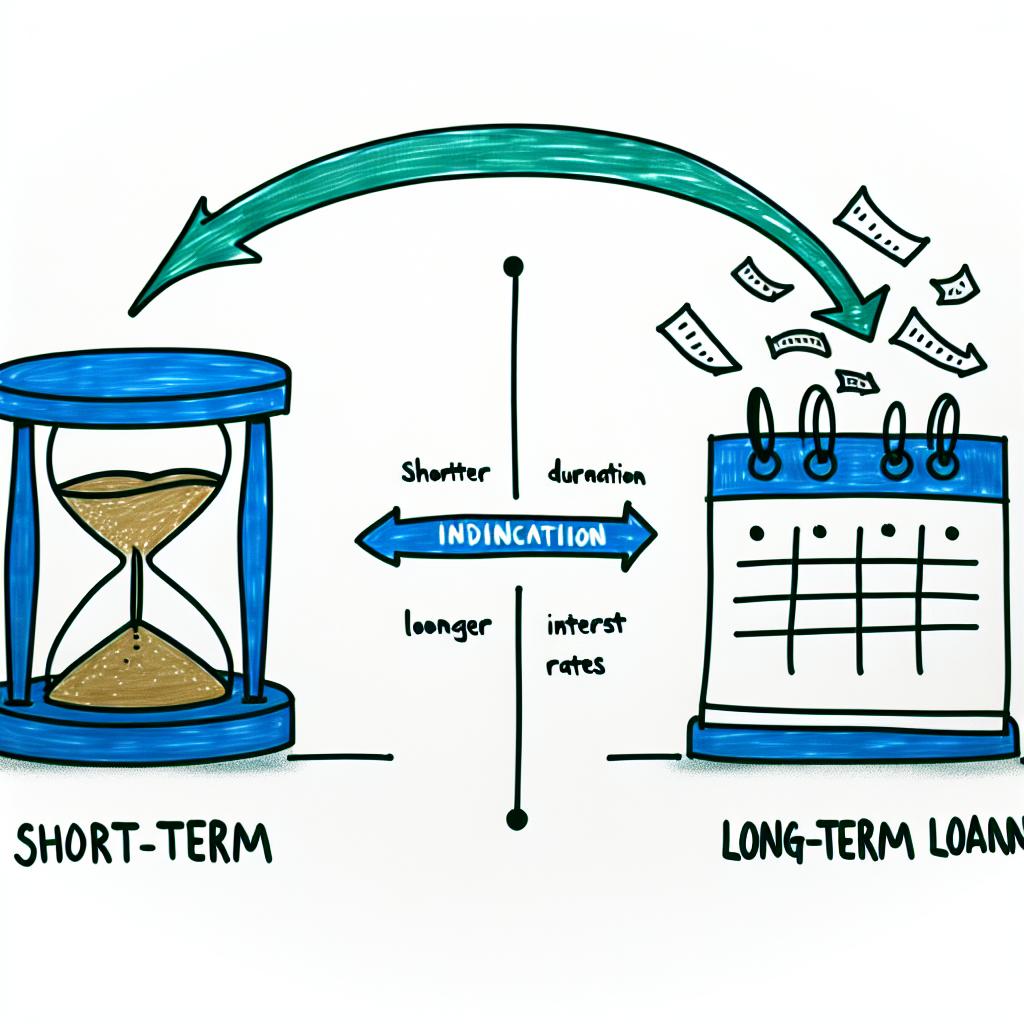
Understanding the Distinction Between Short-Term and Long-Term Loans
In today’s financial landscape, understanding the nuances between short-term and long-term loans is paramount for effective financial management. When consumers seek borrowing options, their choices influence not just their immediate cash flow but also their long-term financial health. Delving into their characteristics provides a clearer view of which option might be best suited for different needs and situations.
Definition and Duration
Short-Term Loans: These types of loans are tailored to be settled within a concise period, generally no longer than a year. They are often utilized for pressing financial needs, bridging immediate gaps in cash flow. Typical examples of short-term loans include products such as payday loans and quick personal loans. These are instruments designed for rapid resolution of urgent monetary challenges.
Long-Term Loans: Conversely, long-term loans extend over much longer durations, potentially spanning several years or even decades. They cater to significant financial undertakings, such as purchasing real estate or investing in a business’s foundational elements. Such loans often take the form of mortgages or student loans, supporting life-changing investments and developments.
Interest Rates
Interest rates mark a notable distinction between these loan types. Short-term loans frequently bear higher interest rates, attributed to their swift repayment terms and heightened lender risk, as they often lack substantial collateral. This often translates into a more expensive borrowing experience over the short life of the loan.
In contrast, long-term loans usually present lower interest rates. Their extended timeframes provide lenders with a sense of security, knowing they can recover their funds over many years. This protracted timeline also allows interest to accumulate gradually, often resulting in a more cost-effective rate.
Financial Implications of Interest Rates
The impact of interest rates on your financial planning cannot be overstated. For short-term loans, although the numerical interest charge might seem manageable due to the quick turnover, the annual percentage rate (APR) tends to be steep. This can quickly escalate personal expenses if not managed prudently.
For long-term loans, while the headline interest rate appears lower, borrowers must be acutely aware of the total interest paid over the duration of the loan. Even small rate differences can accumulate into substantial amounts given the extended repayment period, influencing total loan costs.
Repayment Terms
Repayment structures further differentiate these loans. With short-term loans, borrowers need to meet more frequent and potentially higher payments within the narrow repayment window. The primary advantage is a swift conclusion to the debt obligation.
In long-term loans, the schedule becomes more stretched, possibly resulting in more affordable monthly payments. The reduced immediate financial strain is a clear benefit. However, the extended repayment can lead to paying more in total interest over the loan’s lifetime, even if individual payments are less burdensome.
Flexibility and Financial Strategies
Choosing between these loans often hinges on personal financial strategies. Those opting for short-term loans might plan for immediate budget adjustments to clear the obligation swiftly, avoiding long-term financial commitments.
Alternatively, borrowers securing long-term loans might prioritize cash flow management and security, accepting potentially higher overall costs for monthly affordability. This would align with strategies that favor stability and progressive financial growth.
Qualification Criteria
Obtaining these loans comes with differing qualification processes. Short-term loans often boast more lenient requirements, presenting fewer hurdles to obtain. Minimal documentation and light credit checks provide quick access to funds, appealing to those in urgent need.
However, such accessibility typically comes with premium costs, reflected in higher interest rates and fees. Borrowers should be cautious, understanding that the speed of obtaining funds might also entail increased financial burden.
In contrast, long-term loans demand a more rigorous application process. Lenders conduct thorough assessments, reviewing credit scores, income stability, and comprehensive financial history to ensure the borrower’s ability to uphold long-term commitments. This scrutiny is designed to mitigate lender risk while promoting sustainable borrowing.
Purpose and Utilization
The intended application of funds often guides the choice between short- and long-term loans. Short-term loans lend themselves to transient financial concerns or immediate emergencies. They efficiently cover unexpected expenses like medical emergencies, urgent repairs, or short-term operational needs for small enterprises.
Long-term loans inherently suit larger, more enduring projects. They allow for the financing of significant life and business milestones, whether in the purchase of residential properties, funding advanced education, or expanding business operations. By supporting substantial investments, they lay a foundation for future growth and opportunity development.
Strategic Financial Planning
Comprehensive financial planning is essential when determining the appropriate loan type. Short-term solutions necessitate plans for rapid repayment to minimize costs and potential debt spirals.
On the other hand, long-term loans require consideration of future financial changes, ensuring borrowers can meet obligations while achieving personal and professional objectives. Planning should account for variable factors such as income growth, inflation, and life changes, optimizing the impact of these long-term financial commitments.
Conclusion
In conclusion, comprehending the features and impacts of both short-term and long-term loans is pivotal for making informed borrowing decisions. Each offers distinct advantages and drawbacks, respectively tailored to immediate or extended financial needs. Whether addressing urgent financial requirements or planning for substantial investments, evaluating these loans’ aspects will favor responsible and beneficial financial decision-making.
Ultimately, engagement with these financial instruments should be underpinned by informed choices, considering personal and financial circumstances. Consulting trusted financial resources or expert advisors can provide guidance and insights, ensuring that the selected loan aligns harmoniously with financial goals and capacities.



